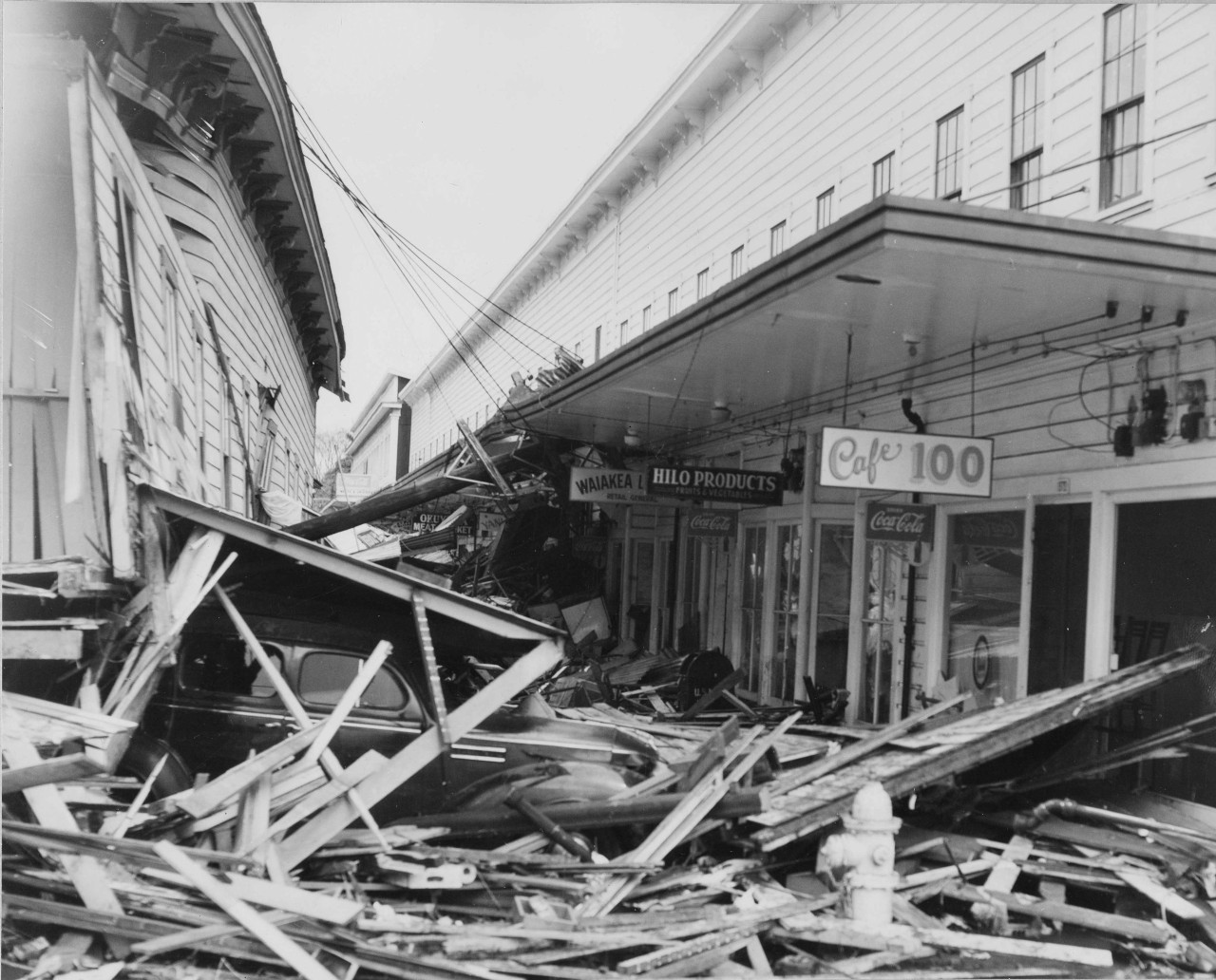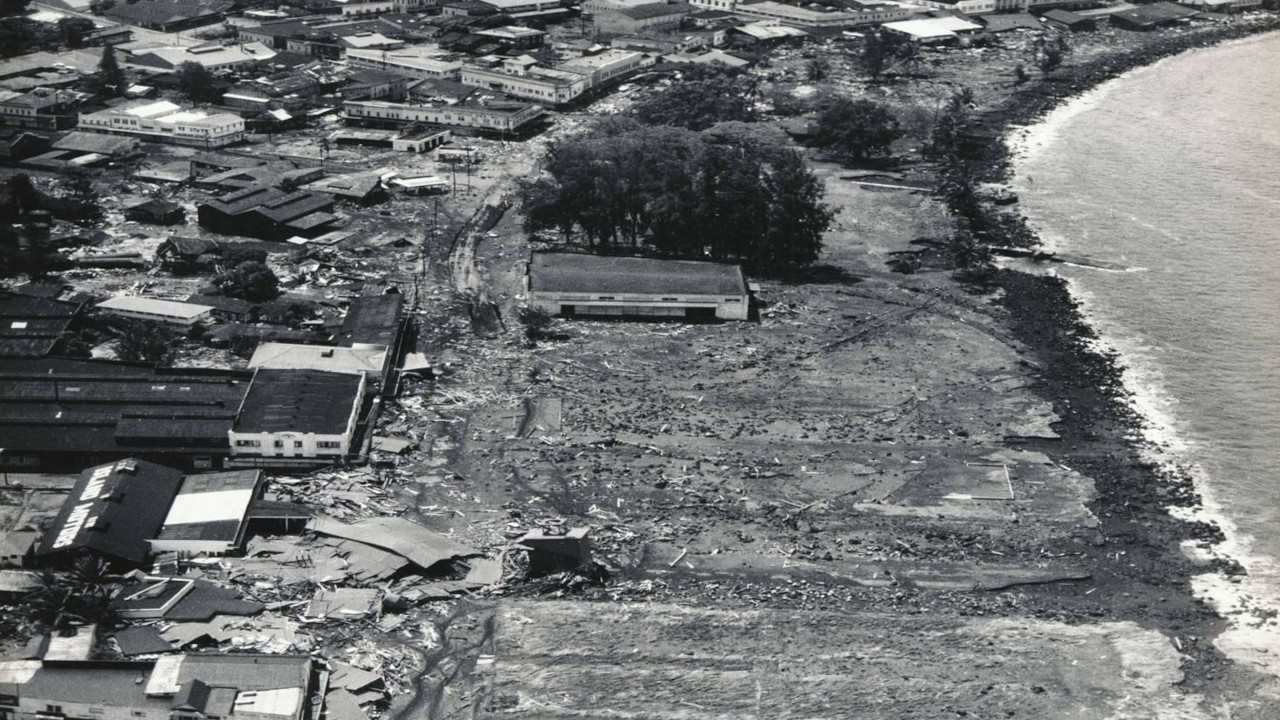(BIVN) – From this week’s Volcano Watch article, written by HVO geophysicist and seismic network manager Jefferson Chang:
April is a month that carries deep layers of meaning on the Island of Hawaiʻi. April is the cherished time of the Merrie Monarch Festival—a week-long celebration of Hawaiian culture, language, and art (particularly hula). April is also Tsunami Awareness Month, a time to remember past tragedies and strengthen our kuleana (responsibility) to protect our communities and ʻāina (land).
At first glance, these two observances may seem separate—one, a joyous cultural gathering, the other a somber reminder of natural disasters. But in the rhythm of the moʻomeheu (culture), they are connected more deeply than most realize.
It is no coincidence that Tsunami Awareness Month is in April. It commemorates the most devastating tsunami to hit the State of Hawaii. The magnitude-8.6 1946 Aleutian Islands earthquake in Alaska produced the April Fool’s Day tsunami, which claimed 158 lives across Hawaiʻi nei and indelibly reshaped the town of Hilo.

Damage to Hilo as a result of the tsunami caused by the Aleutian Islands earthquake on April 1, 1946. The tsunami arrived in Hilo nearly five hours after the earthquake occurred. In this photo, debris nearly covers a vehicle in the lower left part of the image (source unknown, shared by USGS).
Hilo, the home of the Merrie Monarch Festival, is a town that has risen from tragedy. In the heels of recovering from the disaster of 1946, Hilo was struck again by another devastating tsunami on May 23, 1960, from the magnitude-9.5 Great Chilean Earthquake. The ʻāina, here in Hilo, carries the stories of loss and resilience.
The Island of Hawaiʻi was struggling economically in the wake of destructive tsunamis in 1946 and 1960, as well as the declining sugarcane plantations. To capitalize on the growing tourism industry, the Merrie Monarch Festival was started in 1963, but it wasn’t until 1971 that the festival focus shifted to hula and included a competition.
Today, the Merrie Monarch Festival is more than a premier hula competition. Although it started as a means to boost the economy of the Island of Hawaiʻi, it has grown to a cultural celebration that perpetuates and revitalizes the culture of the people of Hawaii. Through hula kahiko, dancers become storytellers—conduits of ancestral memory. They tell of gods and goddesses, of kings and chiefs, of the wind, rain, and lava. And yes, they also tell of the ocean’s power—of tsunami, or kai eʻe, and the lessons woven into moʻolelo (stories) that have been passed down from generation to generation. Hula is more than a dance—it is a vessel of knowledge.
Hawaiian kūpuna observed nature closely. They understood the warning signs of a coming tsunami: the ocean receding, the unusual silence, the sudden shift in animal behavior. These ʻike kupuna (ancestral knowledges) live in their chants and dances, and many hālau use hula as a way to preserve and pass down this wisdom. Wisdom, or lessons, are sometimes borne out of tragedy.
To gather in Hilo, in April, to honor hula and celebrate Hawaiian culture, is an act of healing—a reminder that we are still here, still dancing, still passing on our stories. But the hazards associated with tsunami remain.
Coastal communities on the Island of Hawaiʻi have time to prepare for potential tsunamis from distant earthquakes, with warnings issued by the Pacific Tsunami Warning Center. However, local earthquakes and large underwater landslides can also result in tsunami, which can inundate our shores in minutes or tens of minutes. For example, the 1975 Kalapana earthquake, a magnitude-7.7 earthquake beneath the south flank of Kīlauea, caused damages both from the earthquake shaking and the subsequent tsunami. The tsunami had a maximum height of 20 feet (6 meters) at Halapē in Hawaiʻi Volcanoes National Park, where two people died, and it arrived at Punaluʻu less than a minute and a half after the earthquake struck.
So the next time you watch hula during the Merrie Monarch Festival, listen to the knowledge being shared. Some will speak of Pele’s fire, others of Lono’s rains. And some may speak of Kanaloa’s ocean—the waves that give life, and sometimes, take it away. Let us celebrate Hawaiian culture and remember the ʻāina’s history with humility. With the knowledge of past events that have impacted our communities, consider what you and your ʻohana can do today to be prepared for similar hazardous events in the future. Learn the official sources of information, know the evacuation routes, teach your keiki the signs, and know your home’s risks.


by Big Island Video News11:02 pm
on at
STORY SUMMARY
ISLAND OF HAWAIʻI - It was in April 1946 when a magnitude-8.6 earthquake in Alaska produced a tsunami that claimed 158 lives across Hawaiʻi, and reshaped the town of Hilo.